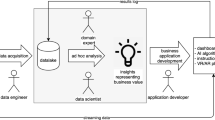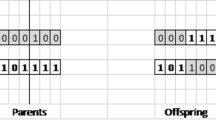Abstract
A framework for enhancement of conceptual tools for rapid computational prototyping of manufacturing entities is presented. A typical manufacturing entity (i.e. manufacturing system and/or individual part) is hierarchically represented in a computer and coupled with applications by dividing its information content into three computational elements: data, drawing and user interface. The information content is divided in this way because each of the above elements has a sufficiently distinct requirement for an efficient computer implementation. Although independent advances have taken place in computer data representation by highly efficient and focused data structures, in drawing representation by sophisticated computer graphics, as well as in user interface by a variety of interface media, these advances cannot be directly utilized in the design of a manufacturing entity unless they are efficiently integrated by relatively small programming effort as is deseribed in this rapid prototyping framework. The framework is implemented in object-oriented programming. A breadth of application areas for the framework is illustrated, and specific details are illustrated with reference to depth in one application area.
Similar content being viewed by others
References
Banerjee, P. (1990) A manufacturing layout reasoning architecture based on an automated integration of linear objective optimization and non-linear qualitative analysis, PhD Dissertation, Purdue University (also available as Technical Report TR-ERC 91-5, Engineering Resources Center for Intelligent Manufacturing Systems, Purdue University, April 1991).
Banerjee, P., Montreuil, B., Moodie, C. L. and Kashyap, R. L. (1992) A modeling of interactive facilities layout designer reasoning using qualitative patterns.International Journal of Production Research,30(3), pp. 433–53.
Birmingham, W., Gupta, A. and Siewiorek, D. P. (1989) The micon system for computer design.IEEE Micro, 61–67.
Boose, J. H. and Bradshaw, J. M. (1987) Expertise transfer and complex problems: using AQUINAS as a knowledge acquisition workbench for expert systems.International Journal of Man-Machine Studies,26(1).
Chang, T. C., Anderson, D. C. and Mitchell, O. R. (1988) QTC—an integrated design/manufacturing/vision system for prismatic parts inProceedings of ASME Computers in Engineering Conference.
Cutkosky, M. and Tenenbaum, J. (1987) CAD/CAM integration through concurrent process and product design.Intelligent and Integrated Manufacturing Analysis and Synthesis, ASME, New York, pp. 1–10.
Frost, R. (1986).Introduction to Knowledge Base System. Macmillan, New York, pp. 214–238.
Gaines, B. R. (1988) Knowledge acquisition systems for rapid prototyping of expert systems,INFOR,26(4), 256–285.
Goldberg, A. and Robson, D. (1983)SMALLTALK-80: The Language & its Implementation, Addison Wesley, Reading, MA.
Hazzah, A. (1990) Objects are taking shape in flat relational world.SOFTWARE, June.
Hoover, C. W., Jones, J. B. et al. (1991)Improving Engineering Design: Designing for Competitive Advantage, National Academy Press, Washington, DC.
Kahn, G., Nowlan, S. and McDermott, J. (1985) MORE: an intelligent knowledge acquisition tool inProceedings of the Ninth International Conference on Artificial Intelligence, pp. 581–584.
Kim, W. (1991)Introduction to Object-Oriented Databases, MIT Press.
Mimura, F. and Suzuki, H. (1989) A CAD system for efficient product design based on design intent.Annals of the CIRP,38(1), 149–152.
Krasner, G. E. and Pope, S. T. (1988) A cookbook for using the model-view-controller user interface paradigm in smalltalk-80, Technical Report, ParcPlace Systems, Palo Alto, CA (also published inJournal of Object-Oriented Programming, 1988).
Libardi, E. C., Dixon, J. R. and Simmons, M. K. (1988) Computer environment for the design of mechanical assemblies: a research review.Engineering with Computers,3(3), 121–136.
Lubars, M. D. (1986) Affording higher reliability through software reusability.ACM SIGSOFT Software Engineering Notes,11(5), 39–42.
Miller, M. S., Cunningham, H., Lee, C. and Vegdahl, S. R. (1986) The application accelerator illustration system inProceedings of ACM OOPSLA Conference, pp. 294–302.
Montreuil, B. and Banerjee, P. (1988) Object knowledge environment for manufacturing systems layout design.International Journal of Intelligent Systems,3(4), 399–410. (A more detailed version is available as Banerjee, P. (1987) Object knowledge environment for manufacturing systems layout design, MSIE Thesis, Purdue University.)
Parnas, D. L. (1972) A technique for software module specification with examples.ACM Communications 15(5), 330–335.
Pascoe, G. A. (1987) Elements of object-oriented programming, inTutorial: Object-Oriented Computing, Vol. 1, Peterson, G. E. (ed.), IEEE Computer Society Press, pp. 15–20.
Solberg, J. J. (1989) Production planning and scheduling in, CIM, inInformation Processing 89, Ritter, G. X. (ed.), Elsevier Science Publishers, pp. 919–925.
Ullman, D. G. and Dietterich, T. A. (1988) Mechanical design methodology, inProceedings of ASME International Computers in Engineering Conference, New York, pp. 173–180.
Author information
Authors and Affiliations
Rights and permissions
About this article
Cite this article
Banerjee, P. A framework for rapid computational prototyping of manufacturing entities. J Intell Manuf 3, 363–378 (1992). https://doi.org/10.1007/BF01473532
Received:
Accepted:
Issue Date:
DOI: https://doi.org/10.1007/BF01473532




